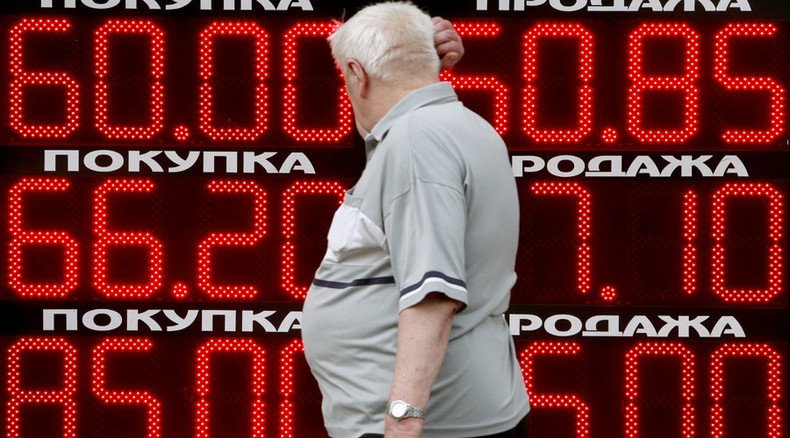Ruble extends losses, as weak oil & softening China disappoint

The Russian ruble has lost 1.5 percent since Friday’s close, trading at 62.7 against the US dollar on Monday 10:00 GMT. The main drivers are weak oil – down more than 18 percent since the end of June - and poor numbers from China.
Brent oil is trading at $51.05 per barrel. Iran’s expected return to crude market is one of the key factors. On Sunday, Oil Minister Bijan Namdar Zanganeh said Tehran is ready to produce 500,000 barrels per day more within a week after sanctions are lifted and by 1 million barrels per day within a month following that. Iran’s current daily crude output is 3.1 million barrels.
Iranian nuke deal: Breath of fresh air for Tehran
What if I tell you that Ruble will fall to 63 vs USD today?
pic.twitter.com/Z2xqMwztF8
— Russian Market (@russian_market) August 3, 2015Chinese factories slowed down in July, with the official purchasing managers' index hitting 50.0 compared to 50.2 in June. Figures below 50 mean a deceleration in the manufacturing sector. A survey from Chinese Caixin and Markit showed manufacturing PMI slump to 47.8 in July, which is the worst result in two years.
READ MORE: China’s manufacturing index tumbles to 2-year low
Markets in China are also suffering, with key index Shanghai Composite losing about 30 percent over the past two months.
Weak markets and economy slowdown will have Beijing to make urgent measures to reach the 7 percent growth benchmark for 2015.
The poor performance in China means that the biggest oil consumer in the world is buying less crude, thus decreasing the global oil demand.
Another reason for the ruble's further fall is Central Bank’s Friday decision to cut the key rate to 11 percent. On July 31, the Central Bank of Russia made its fifth consecutive cut of the key rate, choosing to support economic growth instead of stabilization of the ruble, experiencing strong fluctuations in recent weeks.












